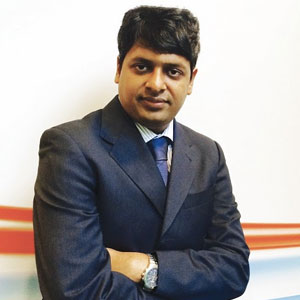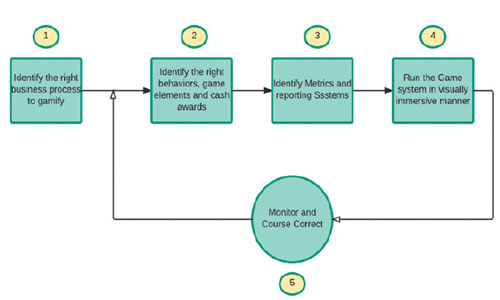THANK YOU FOR SUBSCRIBING

Rochak Agrawal, Director, UBS Technology, Hong Kong
Gamification should be a required tool in any transformation manager’s toolkit who is looking to improve productivity and efficiency in teams. In areas where automation is no longer suitable and gives a poor return on investment, gamification can provide a cost-effective option in making the workplace more productive, fun, and collaborative.
It is essential to spend time in designing the game system correctly from the start to avoid pitfalls later.
The first step in the design process starts with picking the appropriate business process to "Gamify.” A suitable business process is usually one that is measurable, repeatable and not conducive to full automation. These kinds of processes best show up in a typical service desk setup where hundreds of staff deal with user support tickets, e.g. a business process of resolving tickets within a set turnaround time and accuracy level. The business process here is measurable and one can identify KPI's to improve and easily run reports from the ticketing system. The process is also repeatable and execution steps similar amongst different support agents aka ‘player’ allowing game scoring sheets with competition to develop. Finally, as human element is necessary in answering to customer's queries; full automation of the process is not feasible. This makes players naturally inclined towards their work and embrace new concepts for productivity improvement.
The second step in the process is to identify the key behaviors to reward or penalize players. Determining the right behaviors should be a discussion with various stakeholders, including sponsors, team leads, selected staff, i.e., 'players', and even users if possible. Game events then need to be set around these behaviors and points set for achieving each game event.
The reward points sheet should strike a right. E.g., a player should be rewarded equally for resolving one complex ticket as another player who resolved many more tickets but of lower complexity.
A game reward system should also be complemented with a real cash value award. This could be in the form of shopping vouchers given to the winner or enabling players to spend their virtual coins to purchase real value items from an in-game reward store.
An effective game system should allow the use of full set of game elements. While reward points, coins, and leaderboards are essential elements for a total game; experience, badges, titles, skill levels, challenges, and missions should also be enabled.
It Is Essential To Spend Time In Designing The Game System Correctly From The Start To Avoid Pitfalls Later
The game system should be able to 'wipe out' and reset the entire leaderboard points to zero at periodic intervals. Resetting and restarting keeps all players motivated and 'in the game' while also keeping interest alive for new joiners and absentees in the team.

The third step in the design is to use right metrics. There is no point in setting up a reward system around a behavior that cannot be accurately measured. Most organizations don't have real-time reporting in place or even performance reports at an individual staff level. New reports may need to be built and run hourly (or real-time if possible) to track behaviors and game points. Game systems often fail if points on the leaderboard do not refresh frequently. A good rule of thumb is if one can't report on a metric at least hourly; take the metric out of the game system.
The fourth step would be to design the whole game system to give a fun and immersive experience to the players. A 'half-baked' Excel driven game system is bound to fail. A proper game system is one that gives the players a feeling of having transformed into a game world. The experience starts right from the UX – having fun, playful, cartoonish avatars and a very intuitive interface. All players should be able to easily see their position on the leaderboard on a big screen. Optionally sound pings could be used to draw everyone’s attention when a game event notification occurs, e.g. when a player moves up a position on the leaderboard.
The final step in the game system is for game administrators to continuously monitor game progress and make course corrections if needed. It is crucial to differentiate between player ‘shortcuts' which are natural efficiency improvements and player tricks that simply game the system to win quick points. Game administrators can easily fix the latter by adjusting and lowering the number of points awarded for the errant behavior.
Team leads should organize daily huddles and monitor gamification progress. Management should also call out winners weekly in an email to motivate them and decide to connect leaderboard standings with organizational HR performance system showing players importance of engaging in gamification and achieving high scores.
A final recommendation would be to implement gamification in bursts – i.e. once applied successfully to a team to move onto a new business function after a few months. One can come back to the earlier team at a later date with a brand-new game theme. This kind of rotation keeps gamification concept fresh and generates anticipation in staff resulting in improved productivity each time gamification is applied.
An effective game system takes time to build but once set up correctly can help drive productivity and improve team collaboration and engagement levels. Every organization can benefit by keeping gamification as an operational excellence lever.
Weekly Brief
I agree We use cookies on this website to enhance your user experience. By clicking any link on this page you are giving your consent for us to set cookies. More info
Read Also














